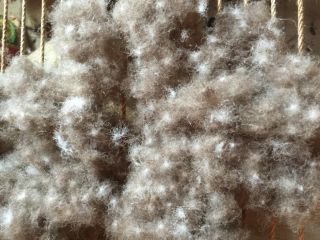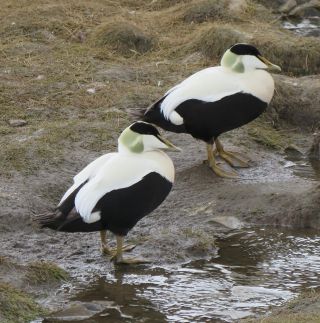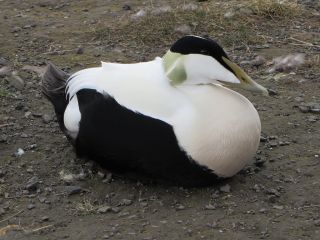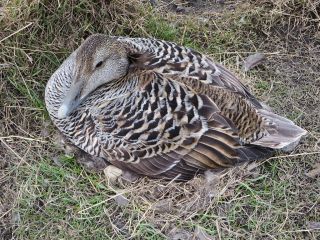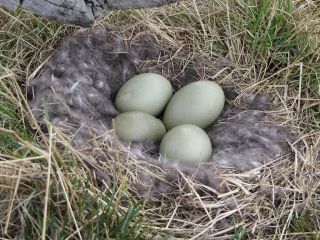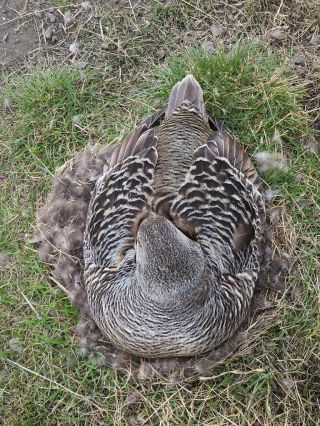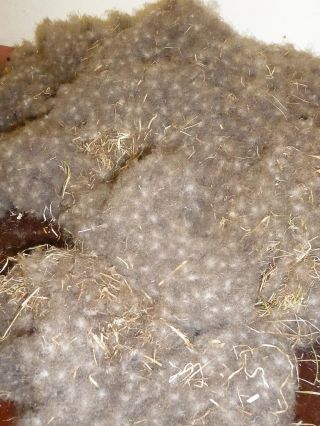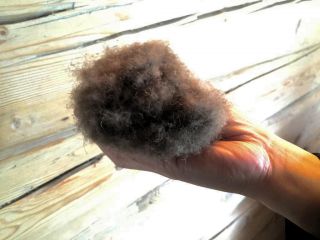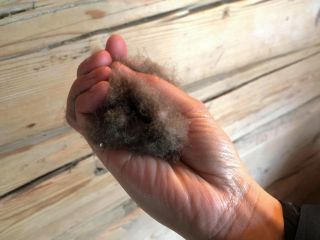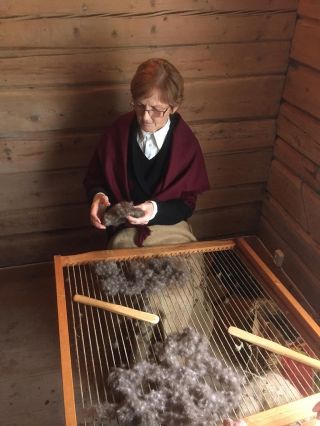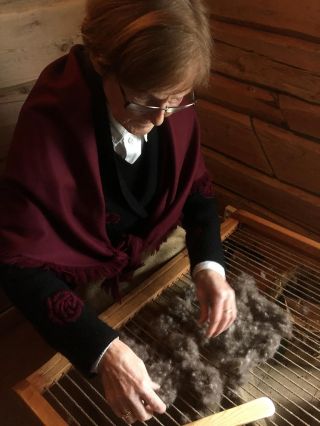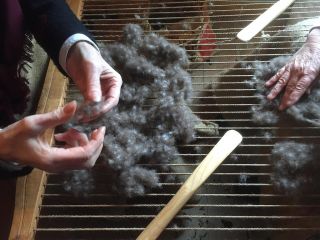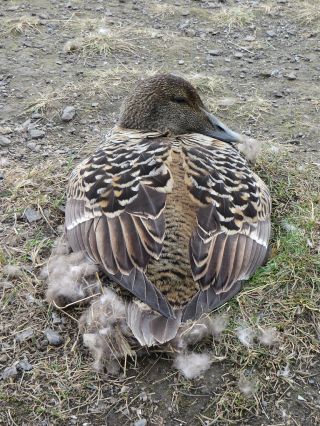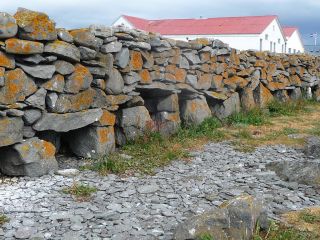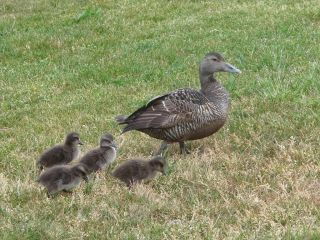Eider down on a down harp
Down: More than feather light and oh so warm!
By Mark Brazil | Jun 10, 2015
I recall backpacking around Kenya as a student in the late 1970s being reduced to living so cheaply that dry chapattis and bananas seemed to me to be a good meal.
On one occasion though I remember cracking. I entered a cheap restaurant and ordered meat (goat) and ugali. That was a meal I can never forget.
Now ugali has a dough-like consistency, it is made from maize flour but resembles very white mashed potato. I remember it so well because it is the only completely tasteless thing I have ever eaten. I don’t mean it didn’t taste good; I mean it was completely and utterly tasteless.
When I placed a forkful of ugali in my mouth there was literally no taste and the only way I knew I had a mouthful of food was from the physical sensation of resistance against my tongue, teeth and cheeks. It was as if I was eating a mouthful of sterile cotton wool, though I hope it contained more nutrition.
Imagine that sensation of nothingness, but instead of in your mouth, in your hand.
That is what it feels like when you take a clump of down and place it in your palm; it is almost ugali-like sensory deprivation, but in a good way. Of course I don’t mean just any down, not even fine goose down, I mean the very best down of all – eider down.
The Common Eider Somateria mollissima is a beautiful bird of the northern temperate and Arctic regions and close relatives have occasionally appeared in northern Japan in winter.
It is where eider breed that they are best known – in places like Iceland and Norway. There, their breeding habits are well-known and have been taken advantage of for a millennium. In fact, after a fashion, these wild ducks are farmed.
The beautifully plumaged males are a gorgeous sight in their breeding finery, whereas the females carry a plumage that provides an extraordinary example of crypsis.
The males depend on their gaudy plumage and their delightful crooning calls to entice the females to mate with them. The females in turn rely so much on their camouflage that they are unwilling to leave their nests during incubation, even when an introduder is within a few feet.
Each female lays a clutch of heavy, olive-green eggs into a nest built on the ground. She lines her nest with grey-brown down that she preens from beneath her belly feathers and when she leaves her nest for food or water, it is this miraculous down that keeps her eggs warm.
The eider is the source of the finest insulating material for clothing and quilts, and to obtain it eider farmers provide or build 'nest boxes' (structures against which the ducks will place their nests), protect them from predators, and take the down from their nests, perhaps once during the incubation period and again afterwards when the female has replenished the down and raised her brood.
The world’s primary producer of eider down is Iceland, though in the past other countries, such as Canada and Russia, have also been involved in production.
If you place a clump of this superlative down on your open palm there is no sensation of weight, there is perhaps the merest whisper of touch; it just depends on how sensitive you are.
Now close your fingers around the down and squeeze and eventually there will be a feeling of light pressure as the down compresses, but it’s a strange sensation of something not quite being there.
Hatching into a world surrounded by such down and beneath a very attentive mother eider must indeed be marvellous; but how rude the shock must be on having to set off into the real world. Thankfully the young ducklings are also clad in down, though of a different type.
“Down” defines at least two types of feathers. First there is the natal down; the down feather coat in which all young birds are first clad. Then there is the down that insulates adult birds; this down is an extra layer of tiny insulating feathers that lie between the outer contour feathers of the bird’s typical plumage and its skin.
In a select few species, I am thinking particularly of the ptarmigan, they have a further, additional layer of insulation provided by the down-like after shaft of each contour feather.
Whereas typical contour feathers of a bird’s body or wing have flattened vanes consisting of parts known as barbs that zip together providing resistance to the air, down lacks those side connections, the barbs are loose and fluffy trapping air as the insulator between the feathers. It’s a wonderful degree of adaptation.
The farmers who harvest eider down have quite a task ahead. The handfuls of down they have taken from each duck’s nest come contaminated with dust and dirt, pieces of dried vegetation and a few of the mother’s body feathers, all of which has gathered during the daily use of the nest, and all of which must be removed somehow.
The traditional and ancient process involves the use of a “down harp”. This consists of a wooden frame with thick strings spanning it so that it resembles a rectangular harp. This can be laid across the knees, even of two people at once, and worked manually.
A small mound of harvested down is placed on to the strings of the horizontal harp and then it is “played”, not with the fingers, but with a wooden spatula-like instrument. Rubbing the tip of this instrument back and forth across the strings and through the down helps to tease apart the loose clumps of down and also loosens any contaminants that then fall through the strings of the harp into the waste basket below.
Once free of dirt, the remaining down is teased apart by hand to remove any final pieces of contaminating grass, eggshell or feather. After hours of processing, what is left is pure, ultra-light, down – the finest that can be bought.
So fine is the down, and so valued, that no wonder the very best down clothes and quilts are extremely expensive and why most of us make do with down mixtures, or goose down instead. However if you’d like a pure eiderdown duvet (comforter) expect to pay over $10,000. No I didn’t type the wrong number of zeros; that really is $10,000 or more!
Japan, as a market for luxury items, is a major importer of Icelandic eiderdown; in 2010 for example Japan imported 1,700 kg of Iceland’s annual 2,500 kg eiderdown production.
Japan also imports 6,000 tonnes of goose down annually, but that is a byproduct of the goose meat industry (whereas eider are never killed), comes from young male and female geese and has much stronger feather shafts, which is why such down often pierces the covering and leaks from garments.
If you want the very best of natural, wild insulation then you must be willing to pay the highest prices, whether it is for qiviut (the wonderfully fine and phenomenally warm under hairs of the Musk Ox), or for eider down.
I have been fortunate to visit eider farms in Iceland, to have seen the dry stone walling houses that have been built for the eider by the farmers there and also to have witnessed the traditional style of down processing at Kjerringoy in Norway. Seeing the wild birds, especially the females with their buoyant broods of youngsters is the most fun though.
I’ll keep dreaming of owning an eider down quilt, perhaps one sheathed in silk as used by the Vikings!
Outro
Author and naturalist Dr Mark Brazil contributed columns in his Wild Watch series to The Japan Times newspaper for 33 years from April 1982 to March 2015.
A collection of Mark’s essays The Nature of Japan has recently been published and is available from www.japannatureguides.com
From April 2015 Wild Watch has moved to a new home on the Japan Nature Guides website.
All articles dating back to 1999 are archived here too for your reading pleasure.

